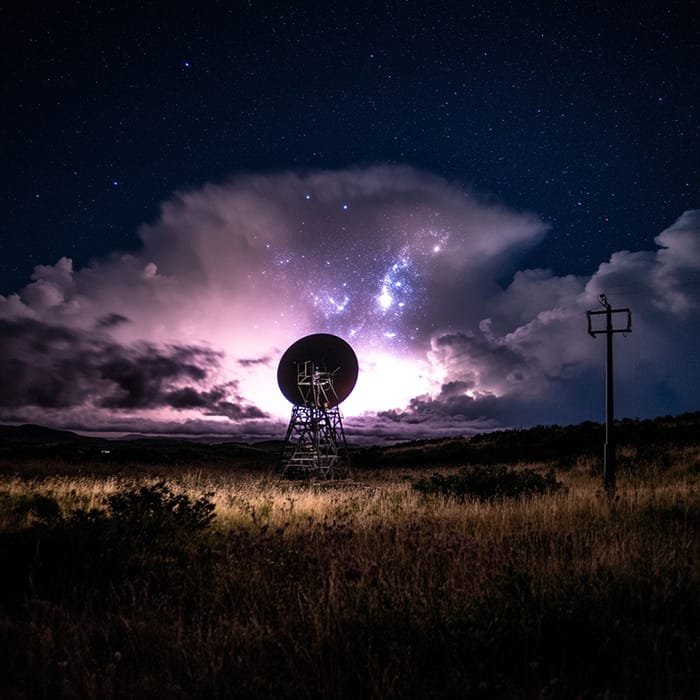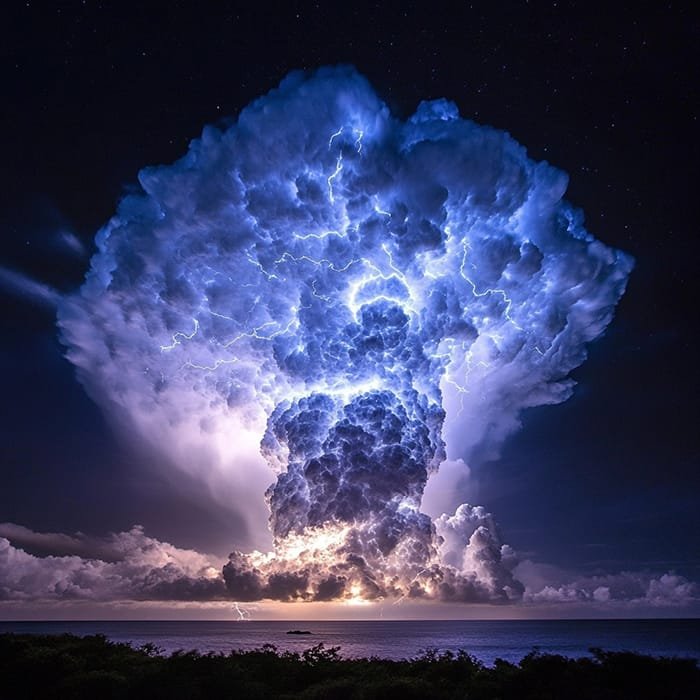Researchers using NASA’s airborne platforms discovered longer-lasting gamma-ray emissions in thunderstorms, offering new insights into lightning mechanisms.
Key Takeaways 📝
- Researchers using NASA’s airborne platforms have discovered longer-lasting gamma-ray emissions in thunderstorms, offering new insights into lightning mechanisms.
- A new type of gamma-ray emission, called “flickering gamma-ray flashes,” can last up to 200 milliseconds, significantly longer than previously observed terrestrial gamma-ray flashes.
- The ALOFT campaign provided unprecedented views of thundercloud activity, thanks to a collaborative effort involving multiple international research institutions.
- These findings could lead to more accurate estimates of lightning risk and enhance our understanding of thunderstorm dynamics, potentially improving safety for people, aircraft, and spacecraft.
- This discovery underscores the importance of scientific exploration and the potential for significant breakthroughs when taking calculated risks in research.
Thunderstorms have long captivated the human imagination, with their awe-inspiring displays of lightning and rumbling thunder. However, the true complexity and power of these atmospheric phenomena have remained largely hidden from our view – until now. In a groundbreaking discovery, a team of researchers using NASA’s airborne platforms have uncovered a new type of gamma-ray emission that sheds light on the inner workings of thunderclouds.
Gamma-ray Emissions in Thunderstorms

Thunderclouds are not just sources of lightning and rain – they are also capable of producing intense bursts of gamma rays, an energetic form of electromagnetic radiation. These bursts, known as terrestrial gamma-ray flashes (TGFs), have been observed in the past, but they are extremely brief, lasting only a few milliseconds.
The researchers, led by a team from the University of Bergen in Norway, made an even more remarkable discovery during their flights aboard NASA’s ER-2 research aircraft. They found a new type of gamma-ray emission that is not only longer in duration, but also more steadily glowing. These “flickering gamma-ray flashes” can last up to 200 milliseconds, providing a unique window into the inner workings of thunderstorms.
The ALOFT Campaign: Unprecedented Views of Thundercloud Activity
The researchers’ groundbreaking findings were the result of the Airborne Lightning Observatory Fly’s Eye Geostationary Lightning Mapper Simulator (ALOFT) campaign, a collaborative effort involving scientists from NASA’s Marshall Space Flight Center, Goddard Space Flight Center, the US Naval Research Laboratory, and multiple universities in the US, Mexico, Colombia, and Europe.
During the campaign, the ER-2 research aircraft flew a series of figure-eight patterns over tropical thunderclouds in the Caribbean and Central America, providing the team with unprecedented views of cloud activity. The scientific payload aboard the aircraft included weather radars, gamma-ray detectors, and other sensors designed to measure lightning flashes, microwave emissions, and gamma-ray bursts.
Filling the Missing Link in Scientists’ Understanding
The discovery of the flickering gamma-ray flashes is a significant breakthrough in the field of thunderstorm research. These longer-duration emissions fill a crucial gap in scientists’ understanding of the radiation produced by thunderclouds, providing new insights into the mechanisms that generate lightning.
They’re telling us something about how thunderstorms work that’s really important,” said Joseph Dwyer, a physicist at the University of New Hampshire who was not involved in the research. “Thunderstorms produce lightning that hurts and kills a lot of people, and we don’t really understand what’s going on inside the clouds.”
Implications for Lightning Risk Estimation and Thunderstorm Dynamics
The insights gained from the discovery of the flickering gamma-ray flashes could lead to more accurate estimates of lightning risk for people, aircraft, and spacecraft. Additionally, the new understanding of thundercloud dynamics could have broader implications for the field of meteorology, as scientists work to unravel the complex processes that drive these powerful atmospheric phenomena.
It shows that if you’re willing to take a little bit of risk, you can have a huge payoff,” said Timothy Lang, the project scientist for the ALOFT campaign at NASA’s Marshall Space Flight Center. “If we had gotten just one flash, we would have been ecstatic – but we got well over 100.”

The discovery of the flickering gamma-ray flashes in thunderstorms is a testament to the power of scientific exploration and the relentless pursuit of knowledge. By harnessing the capabilities of NASA’s airborne platforms, the research team has opened a new chapter in our understanding of these dynamic atmospheric systems, shedding light on the hidden wonders that lie within.
As we continue to unravel the mysteries of thunderstorms, the insights gained from this research will undoubtedly have far-reaching implications, shaping our understanding of lightning, weather patterns, and the fundamental processes that shape our planet. It is a reminder that the natural world still holds many secrets, waiting to be uncovered by the curious and the adventurous.
























